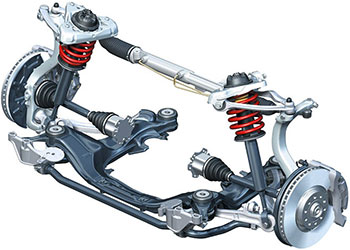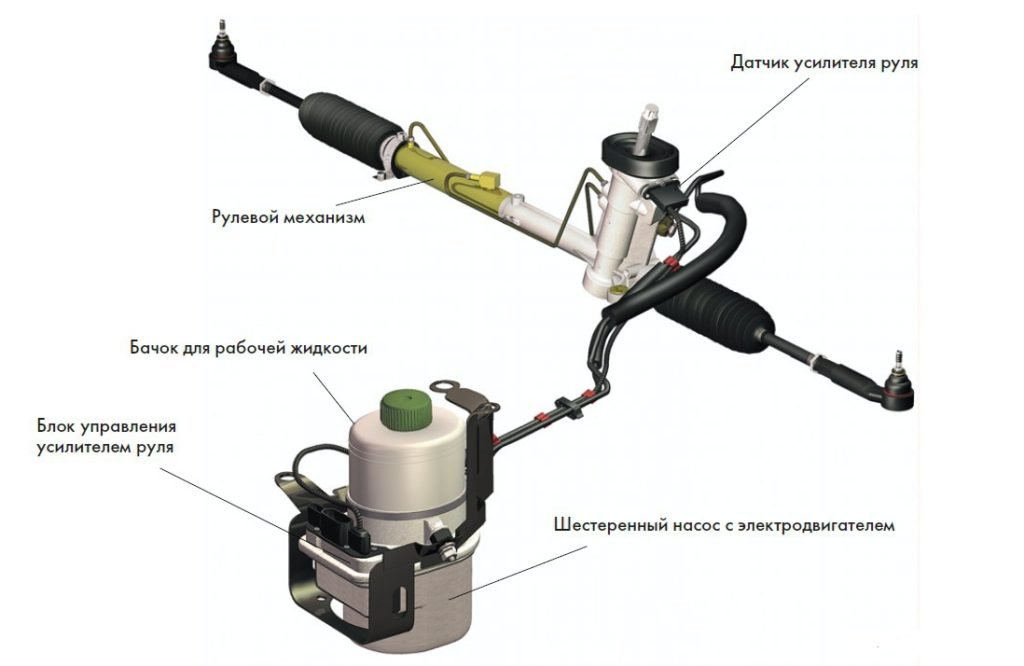
Power steering
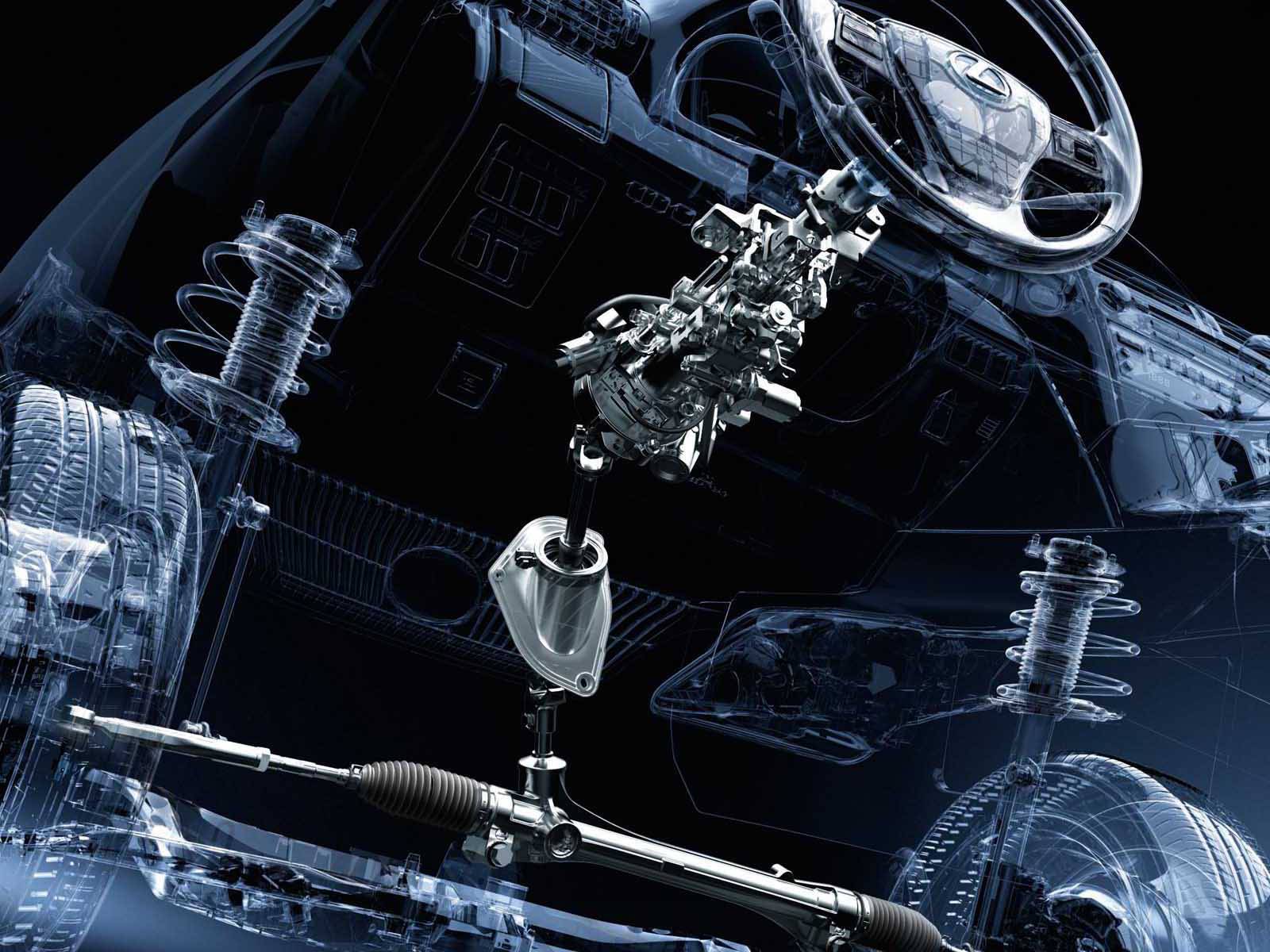 Experienced drivers have remembered the specifics of driving a car without power steering for the rest of their lives: it is very difficult to turn the wheels when the car is stationary; you need to turn the steering wheel while moving. Fortunately, the need to master such skills is a thing of the past; almost all modern cars are equipped with power steering.
Experienced drivers have remembered the specifics of driving a car without power steering for the rest of their lives: it is very difficult to turn the wheels when the car is stationary; you need to turn the steering wheel while moving. Fortunately, the need to master such skills is a thing of the past; almost all modern cars are equipped with power steering.
The benefits are obvious:
- easy to turn the steering wheel;
- when maneuvering, fewer turns of the steering wheel are required;
- it is easier to keep the car on the desired trajectory in case of wheel damage or other extreme situations;
- when hitting an obstacle, the amplifier acts as a damper, smoothing out the impact when transferred to the driver’s hands.
At the FAVORIT MOTORS Group car dealerships, cars with different types of power steering are presented.
Power steering classification
Hydraulic power steering (power steering)
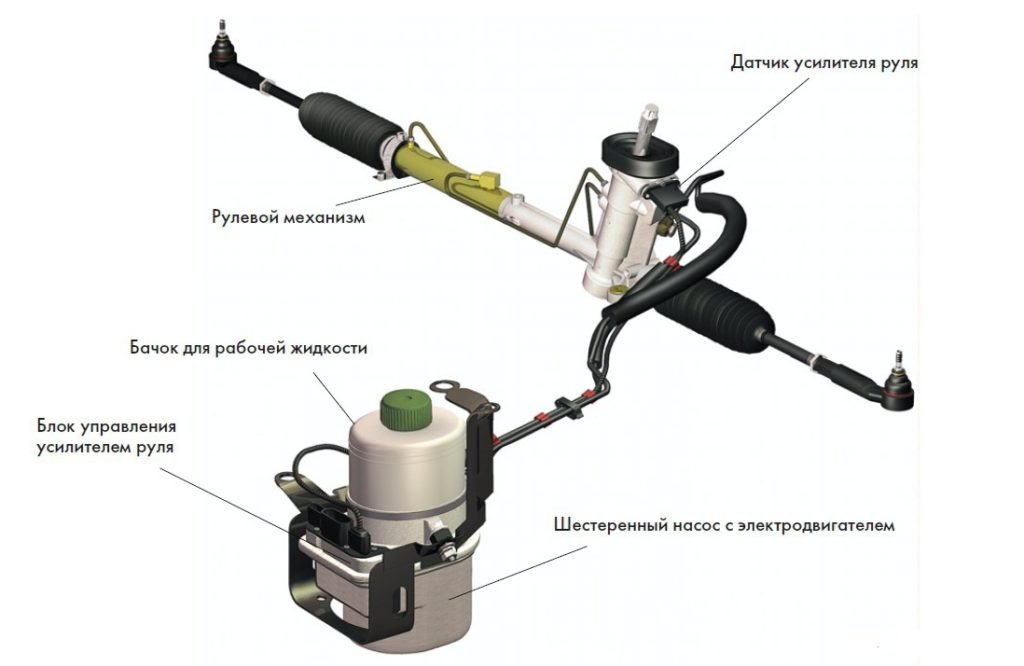
This is one of the most common types, used since the 50s of the last century. It consists of a pump, a hydraulic cylinder, a reservoir with a supply of hydraulic fluid (also called power steering oil) and a distributor, connected by tubes. A pump connected by a drive to the engine creates the necessary pressure in the system. The hydraulic cylinder converts fluid pressure into movement of the piston and rod, thereby facilitating the rotation of the wheels.
Experienced drivers like the hydraulic booster because it provides informative and precise control. If it fails, it will be difficult to turn the steering wheel, but you can still get to the service station.
Cons of such a system:
- the pump consumes part of the engine energy, which leads to increased fuel consumption;
- There is a possibility of system leakage.
If the tightness of the system is broken, the liquid gradually leaves. If this is not noticed in time, then an expensive unit may fail. When you notice a decrease in the fluid level in the power steering reservoir, you must immediately contact the technical service of FAVORIT MOTIRS Group of Companies. Qualified technicians will fix the problem in a short time.
Electric power steering (EPS)
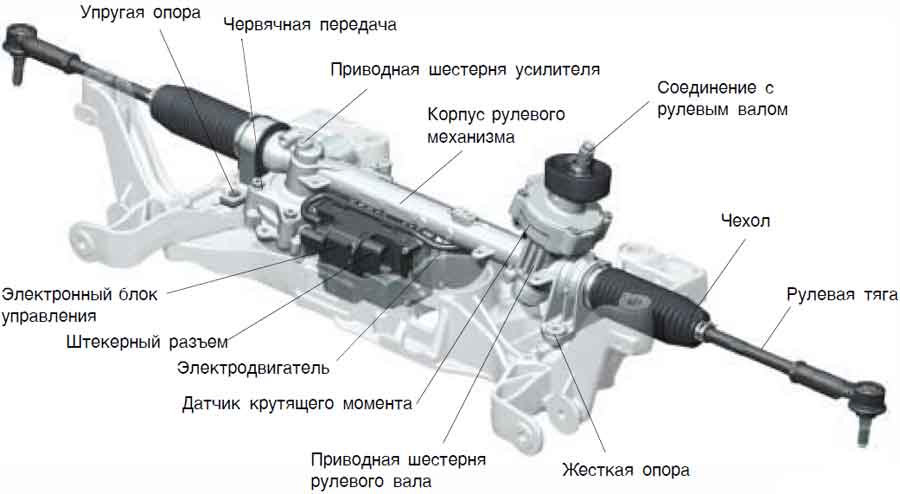 Electricity rules the world, and now electric power steering, consisting of an electric motor, a mechanical transmission and a control system (sensors), has become widespread. The sensor records the driver's actions and activates a motor integrated into the steering wheel rack. As a result, minimal effort is required from the driver.
Electricity rules the world, and now electric power steering, consisting of an electric motor, a mechanical transmission and a control system (sensors), has become widespread. The sensor records the driver's actions and activates a motor integrated into the steering wheel rack. As a result, minimal effort is required from the driver.
Such a system is compact, not that expensive, and requires minimal settings. The probability of failure, compared to a hydraulic one, is small. Most often, the cause of the malfunction is oxidation of the contacts or a malfunction of the sensor. There are cases when the cause of a defect is a malfunction of the control units or power surges in the on-board network. In this case, a malfunction signal will light up on the instrument panel, and you need to promptly contact the technical service of FAVORIT MOTORS Group of Companies.
Electrohydraulic power steering (EGUR)
The closed system consists of the same elements as the classic hydraulic power steering: pump, hydraulic cylinder, distributor, reservoir with power steering fluid. The main difference is that the pump rotates an additional electric motor, powered by a generator. This system does not operate constantly, but only when the wheel rotates, which reduces fuel consumption. Of course, there is a possibility of power steering fluid leaking and electrical units failing, but the advantages are obvious: energy efficiency, combined with information content and control accuracy.
Division by principle of action
Amplifiers can be adaptive (the term active is also used) or non-adaptive. The former have a variable gain, which depends on the speed of the car: at low speed the steering wheel turns easily, when the speed increases, the steering wheel becomes heavy. This is done for safety reasons, since strong and sudden turning of the steering wheel at speed can lead to an accident. Adaptive power steering includes an additional speed sensor.
How to save and extend the life of your power steering
Often drivers themselves disable the systems. A classic case: trying to climb onto a high curb with the wheels twisted too far. Increased pressure is created in the hydraulic system, which leads to leakage. The electric motor may fail due to increased load. Experts from FAVORIT MOTORS Group do not recommend holding the steering wheel in the extreme position for more than 4 seconds - again due to the occurrence of excess pressure.
In cold weather, you need to slightly warm up the power steering fluid before starting. To do this, a couple of rotations of the steering wheel are enough. And, of course, you need to periodically check the tension of the power steering pump drive belt, monitor the level of working fluid in the reservoir, and promptly replace the power steering fluid along with the filter.
As you can see, most recommendations apply to hydraulic or electro-hydraulic systems. Electric amplifiers require less maintenance.
